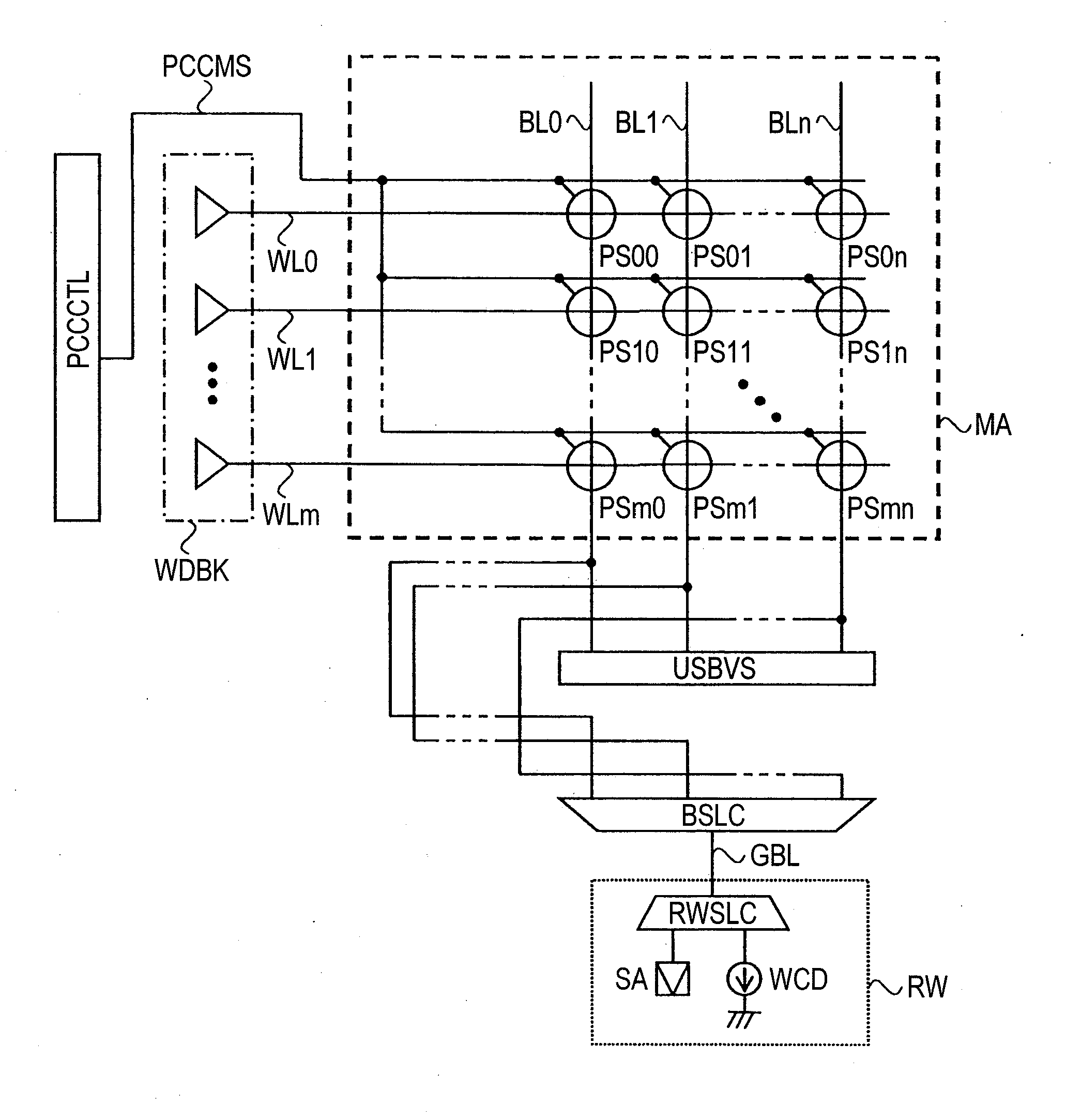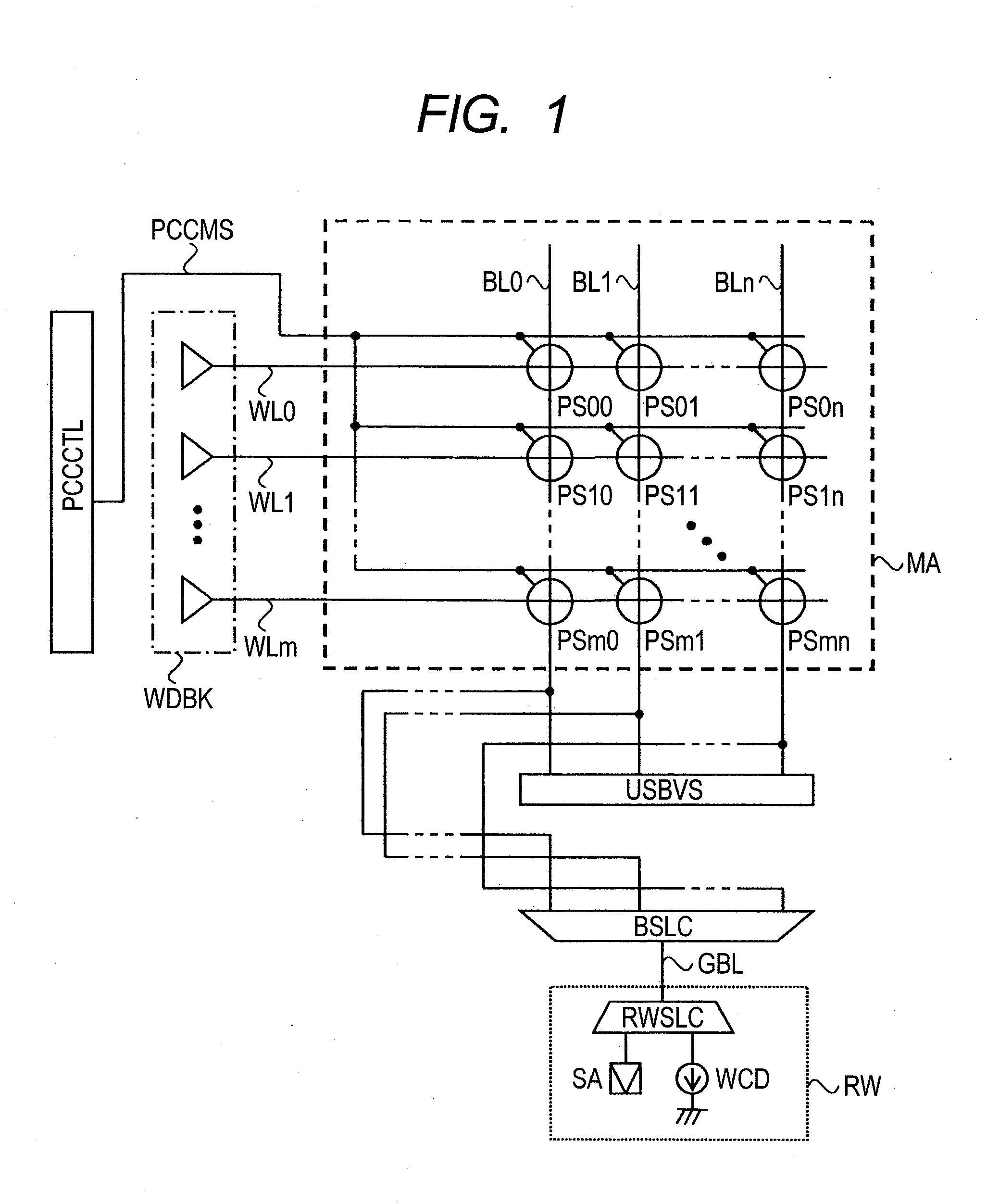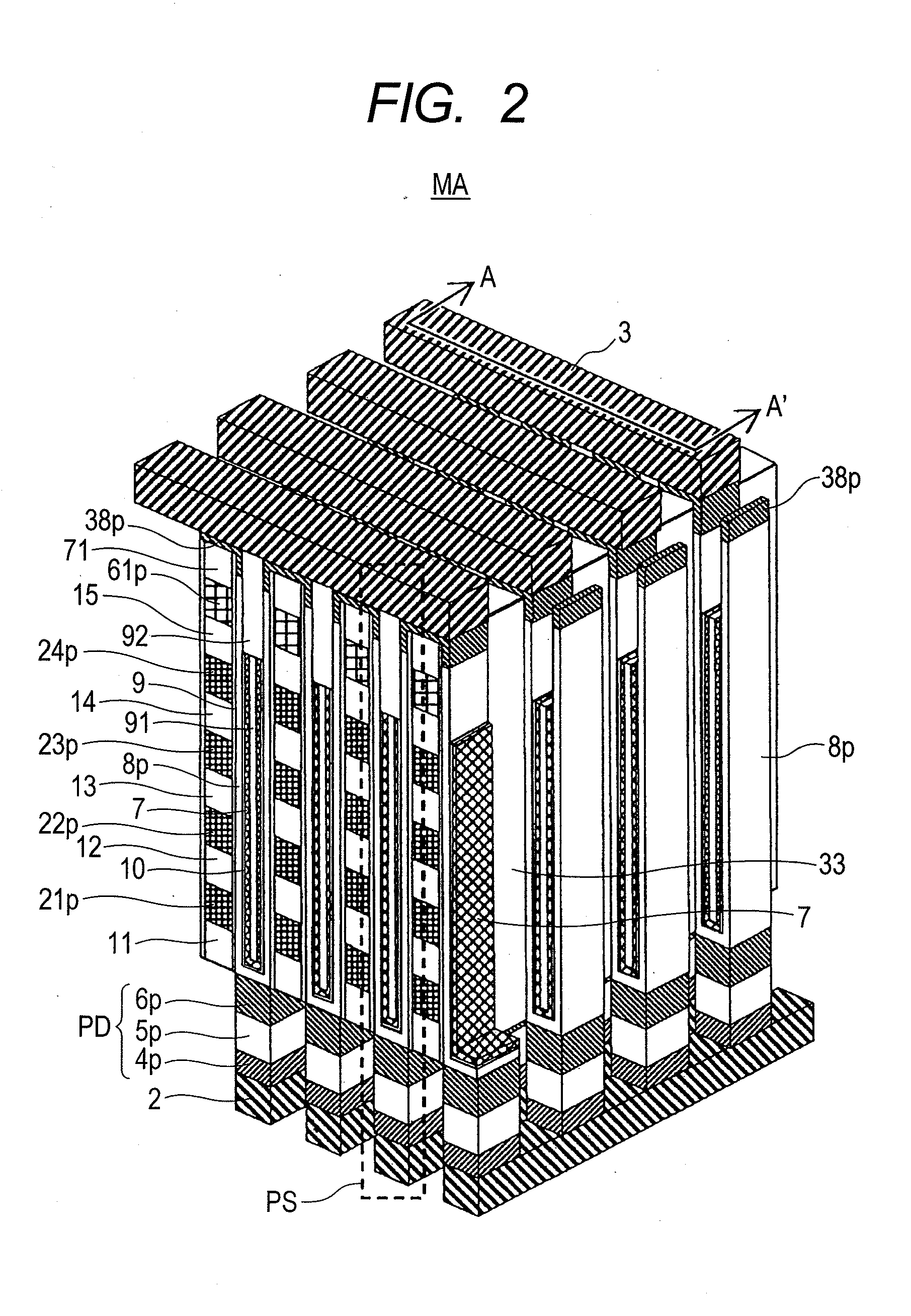Semiconductor device
a technology of semiconductor devices and semiconductors, applied in semiconductor devices, digital storage, instruments, etc., can solve the problems of loss and possible uselessness of remaining regions, and achieve the effect of high integration degr
- Summary
- Abstract
- Description
- Claims
- Application Information
AI Technical Summary
Benefits of technology
Problems solved by technology
Method used
Image
Examples
first embodiment
[0038]A preferred embodiment is to be described with reference to an example of a configuration of a memory cell array in which a phase-change-type strings each having a diode and two pairs of phase-change-type chain cells are arranged in a matrix. The phase-change-type chain cell has a configuration in which multiple memory cells are stacked in a direction vertical to a silicon substrate and, further, a transistor for selecting one of phase-change-type chain cells is connected in series further thereover. Further, the memory cell has a configuration in which a select transistor and a phase change device are connected in parallel. Then, the circuit configuration and the structure of the memory cell array are to be described and then the method of arranging various control lines and driving circuits and the operation of the memory cell array are to be described in details.
>
[0039]FIG. 1 shows a memory cell array circuit according to this embodiment. A memory cell array MA includes pha...
second embodiment
[0081]In the first embodiment described above, driving circuits etc. are arranged at the periphery of the memory cell region MAAR as shown in FIG. 8. However, as described above, since the silicon substrate just below the memory cell array region MAAR is an empty place, it is possible to form a portion of the word driver group WDBK, the phase-change-type chain cell control circuit PCCCTL, and the non-select bit line voltage supply circuit USBVS in this region. FIG. 10 is a layout chart schematically showing such an arrangement. In accordance with the layout, the chip area can be decreased. As a result, a low cost phase change memory can be attained.
third embodiment
[0082]In this embodiment, another configuration for the memory cell array of the phase change memory is to be described. This embodiment has the following two features. The first feature is that the memory cell array includes multiple memory tiles. The second feature is that multiple memory tiles use a read / write circuit in common.
[0083]FIG. 11 shows a configuration of a memory cell array according to this embodiment. The drawing shows, as an example, memory tiles MT00 to MT11 each arranged at intersection between the global word line groups GWLMS0 to GWLMS1 and global bit lines GBL0 to GBL1. Each of the memory tiles MT00 to MT11 includes a circuit block excluding the read / write RW from the memory cell array shown in FIG. 1. Read / write circuits RW0 to RW1 are arranged to the global bit lines GBL0 to GBL1, respectively.
[0084]The global word line groups GWLMS0 to GWLMS1 are controlled by a global word driver group GWDBK. Each of the global word line groups GWLMS0 to GWLMS1 has global ...
PUM
 Login to View More
Login to View More Abstract
Description
Claims
Application Information
 Login to View More
Login to View More - R&D
- Intellectual Property
- Life Sciences
- Materials
- Tech Scout
- Unparalleled Data Quality
- Higher Quality Content
- 60% Fewer Hallucinations
Browse by: Latest US Patents, China's latest patents, Technical Efficacy Thesaurus, Application Domain, Technology Topic, Popular Technical Reports.
© 2025 PatSnap. All rights reserved.Legal|Privacy policy|Modern Slavery Act Transparency Statement|Sitemap|About US| Contact US: help@patsnap.com



